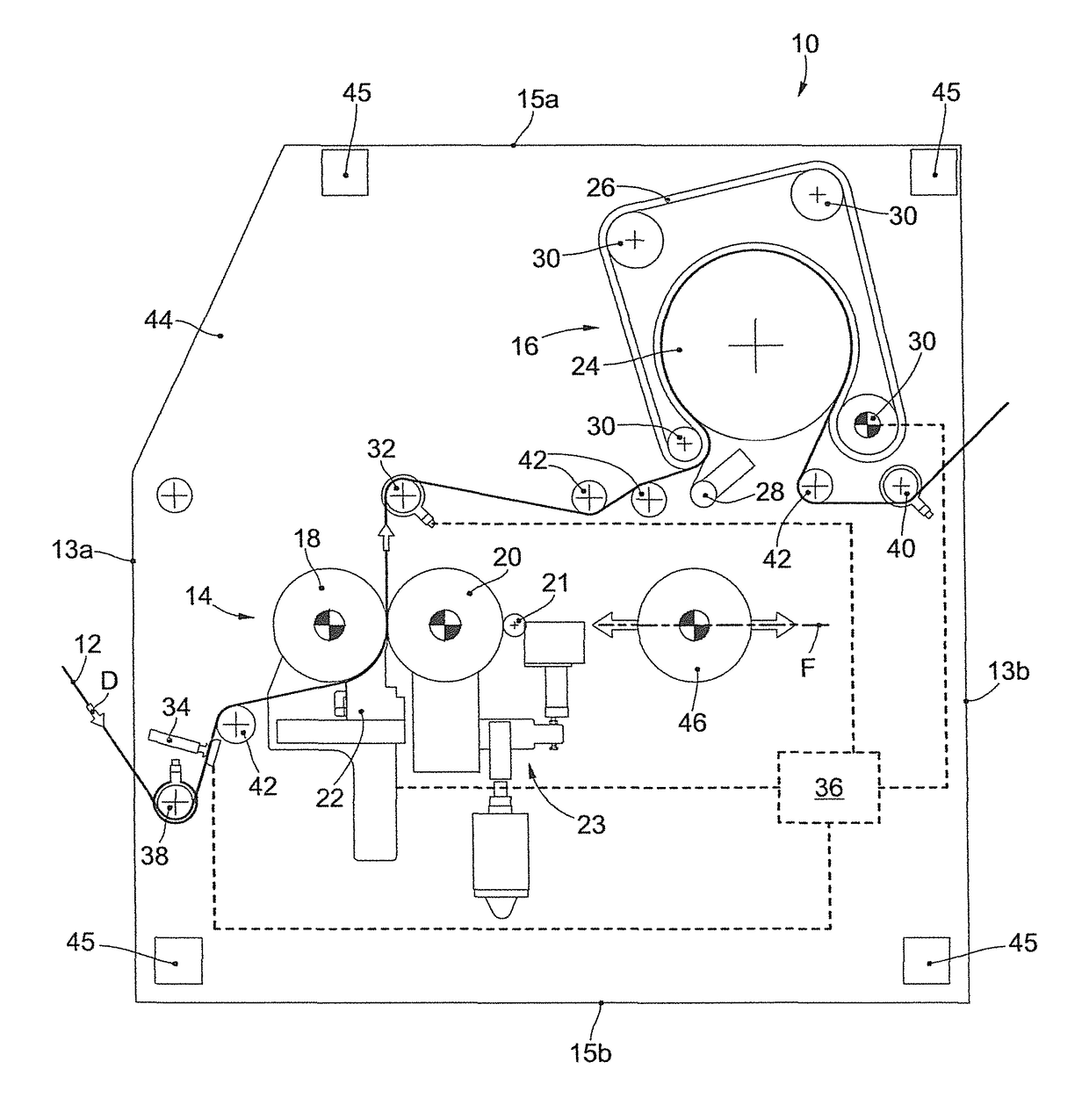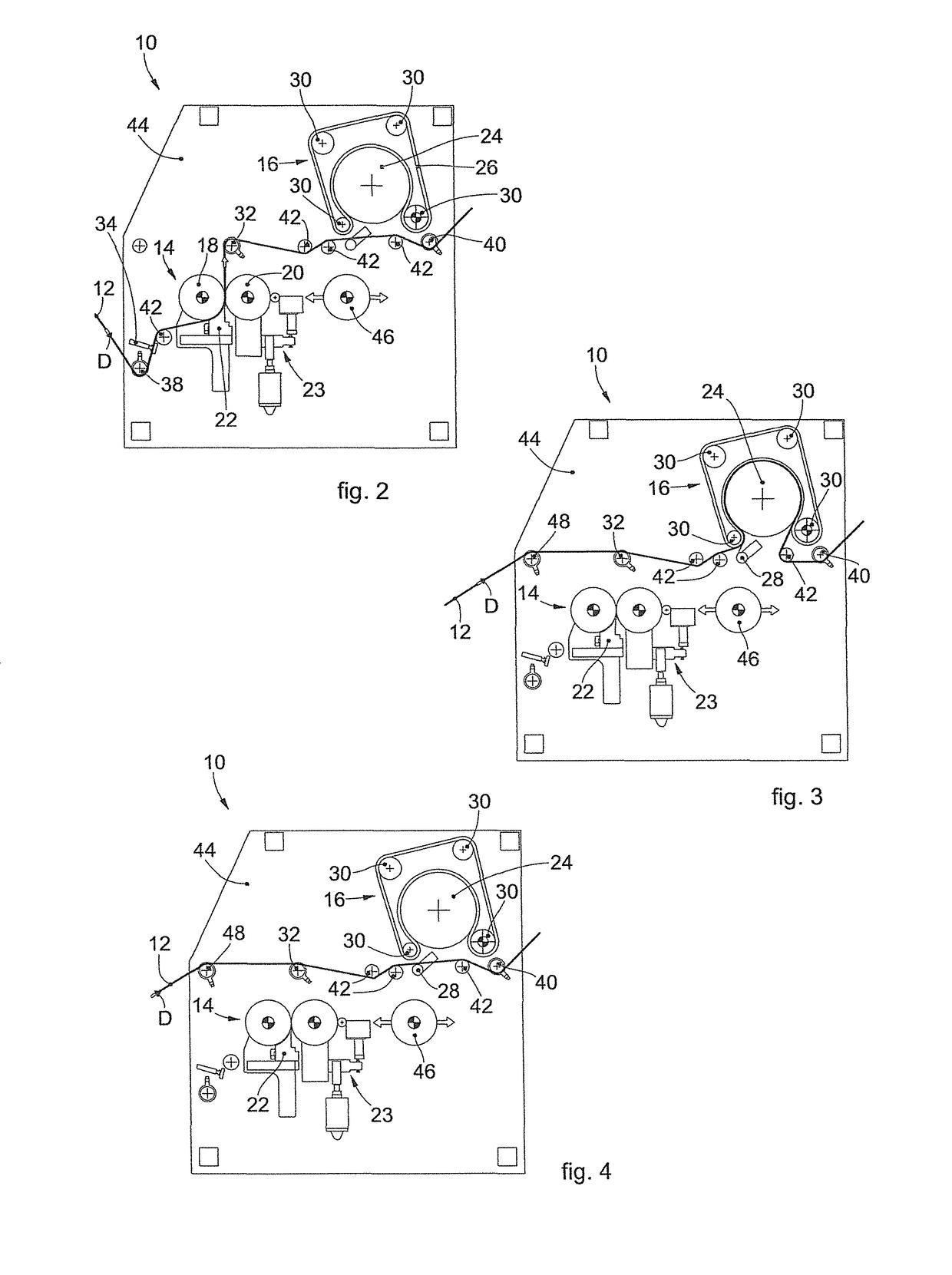Compacting machine for fabrics and corresponding compacting method
a fabric and compacting technology, applied in the field of fabric compacting machines, can solve the problems of reducing the efficiency of production, affecting the speed of production, and affecting the quality, so as to reduce the number of maintenance interventions, the length of downtime, and the overall running cost.
- Summary
- Abstract
- Description
- Claims
- Application Information
AI Technical Summary
Benefits of technology
Problems solved by technology
Method used
Image
Examples
Embodiment Construction
[0039]We shall now refer in detail to the various embodiments of the present invention, of which one or more examples are shown in the attached drawings. Each example is supplied by way of illustration of the invention and shall not be understood as a limitation thereof. For example, the characteristics shown or described insomuch as they are part of one embodiment can be adopted on, or in association with, other embodiments to produce another embodiment. It is understood that the present invention shall include all such modifications and variants.
[0040]According to the present description, embodiments described here concern a compacting machine 10 of the hybrid type, configured to work fabrics 12 which, merely by way of non-restrictive example of the present invention, can be natural fabrics of wool or cotton, or synthetic fabrics of cotton-Lycra, 100% Lycra, viscose or suchlike.
[0041]The fabric 12 is preferably an open fabric, but it is not excluded that it can also be a tubular f...
PUM
 Login to View More
Login to View More Abstract
Description
Claims
Application Information
 Login to View More
Login to View More - R&D
- Intellectual Property
- Life Sciences
- Materials
- Tech Scout
- Unparalleled Data Quality
- Higher Quality Content
- 60% Fewer Hallucinations
Browse by: Latest US Patents, China's latest patents, Technical Efficacy Thesaurus, Application Domain, Technology Topic, Popular Technical Reports.
© 2025 PatSnap. All rights reserved.Legal|Privacy policy|Modern Slavery Act Transparency Statement|Sitemap|About US| Contact US: help@patsnap.com



